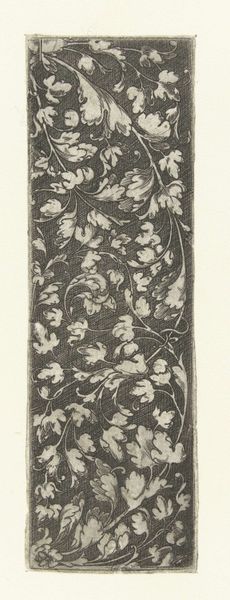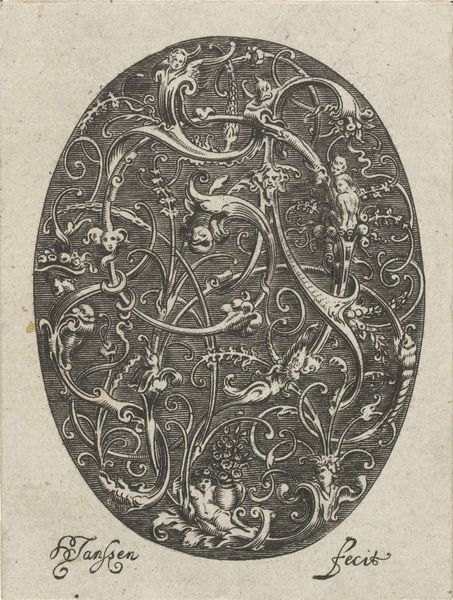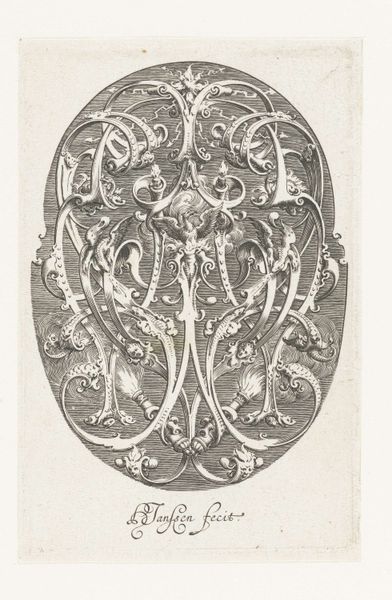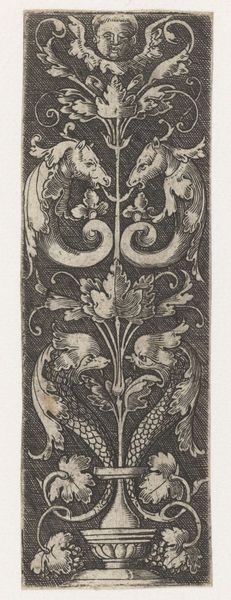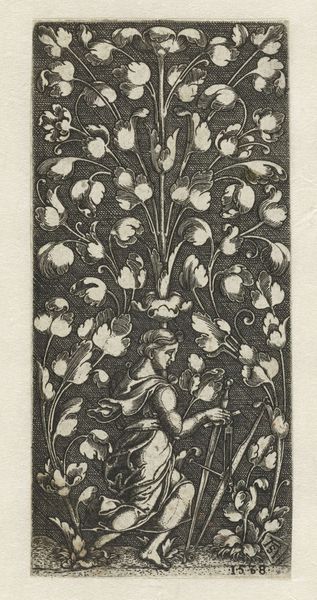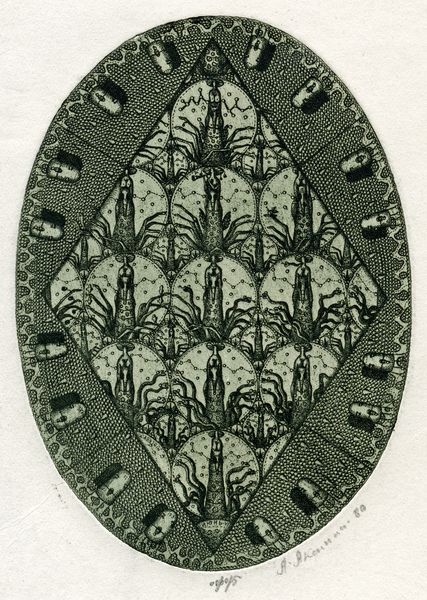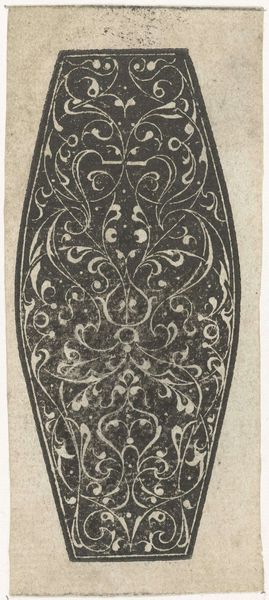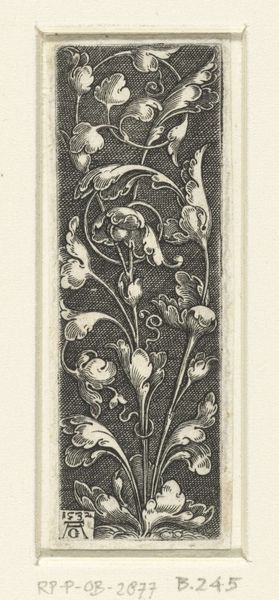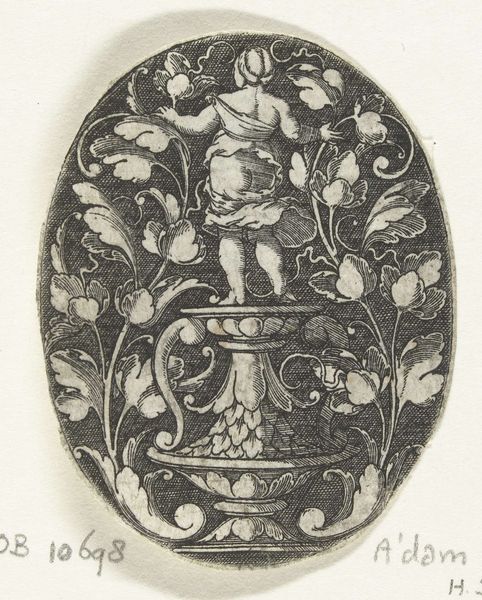
print, engraving
#
allegory
#
pen drawing
# print
#
old engraving style
#
figuration
#
11_renaissance
#
pen-ink sketch
#
pen work
#
genre-painting
#
engraving
Dimensions: height 46 mm, width 34 mm
Copyright: Rijks Museum: Open Domain
Curator: Look at this intricate print, "Ovaal met bladranken die elkaar kruisen," likely created sometime between 1500 and 1600. The artist, regrettably, remains anonymous. Editor: It's immediately striking how much detail is packed into this small oval. It feels almost claustrophobic, yet there's a certain charm to the chaos of intertwined leaves. Curator: Absolutely. This dense network of foliage acts as a framing device. And nestled within it are figures, adding another layer to the composition. What draws your attention in terms of content? Editor: The cherubic figures at the bottom are quite prominent. Their presence gives it an allegorical dimension, maybe touching on themes of innocence or the cycle of nature. Curator: Precisely. Consider how prints like this circulated. This could have served a didactic purpose or functioned as part of a broader cultural language accessible across different social strata. Its value doesn't reside merely in aesthetic beauty, but in the accessibility to wider demographics during that time period. Editor: It also highlights the function of prints as vehicles for the transmission of artistic ideas and styles, irrespective of the creator's identity, which speaks volumes to cultural understanding. What about the context of its creation; how might have political forces shaped this engraving? Curator: These prints were widely used for disseminating information, fashion trends, and political statements. Depending on the context, something as seemingly innocent as intertwining foliage can hint at specific ideologies or alliances. Furthermore, this also shows art's purpose for self-expression and creativity. Editor: Thinking about the role of institutions – I wonder how prints like these were originally collected and displayed? Would they have been primarily for private viewing or would they be accessible in more public spaces? The display greatly influences audience interaction. Curator: It all speaks to the complex intersections of art, society, and the enduring power of imagery in shaping our perceptions. I think there is still something that this particular engraving reveals even for today’s viewers and how imagery remains as such a critical vehicle of transmission. Editor: A fascinating peek into a past that still resonates, even now.
Comments
No comments
Be the first to comment and join the conversation on the ultimate creative platform.
